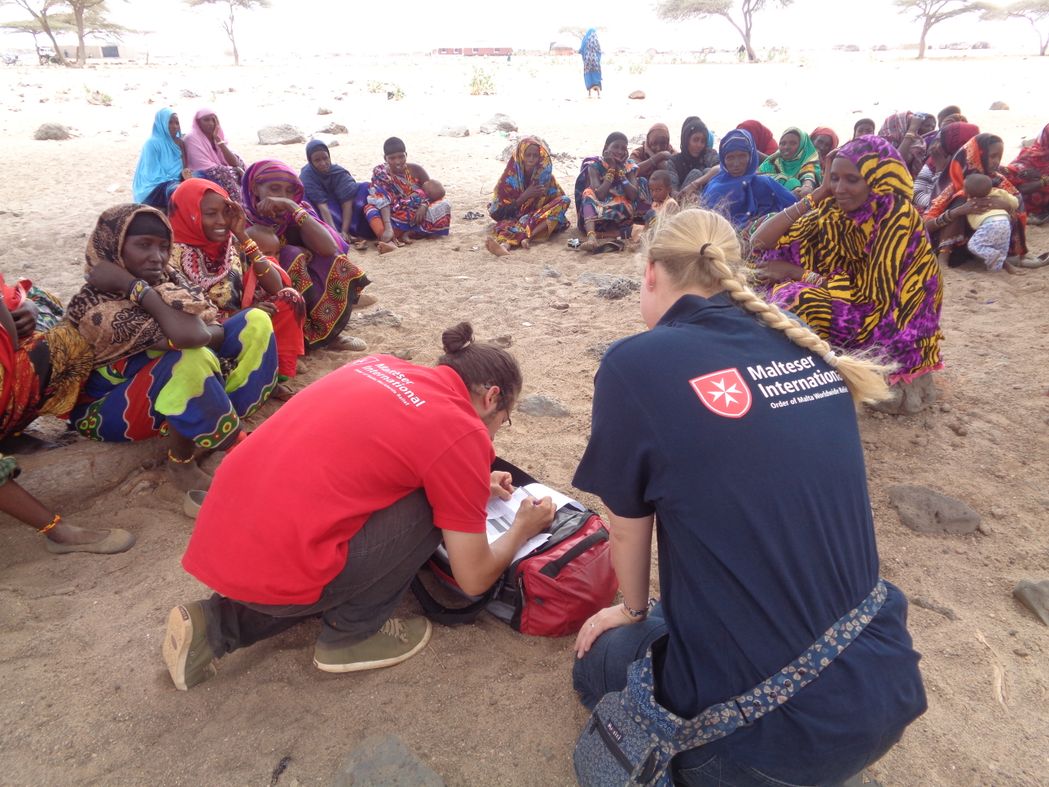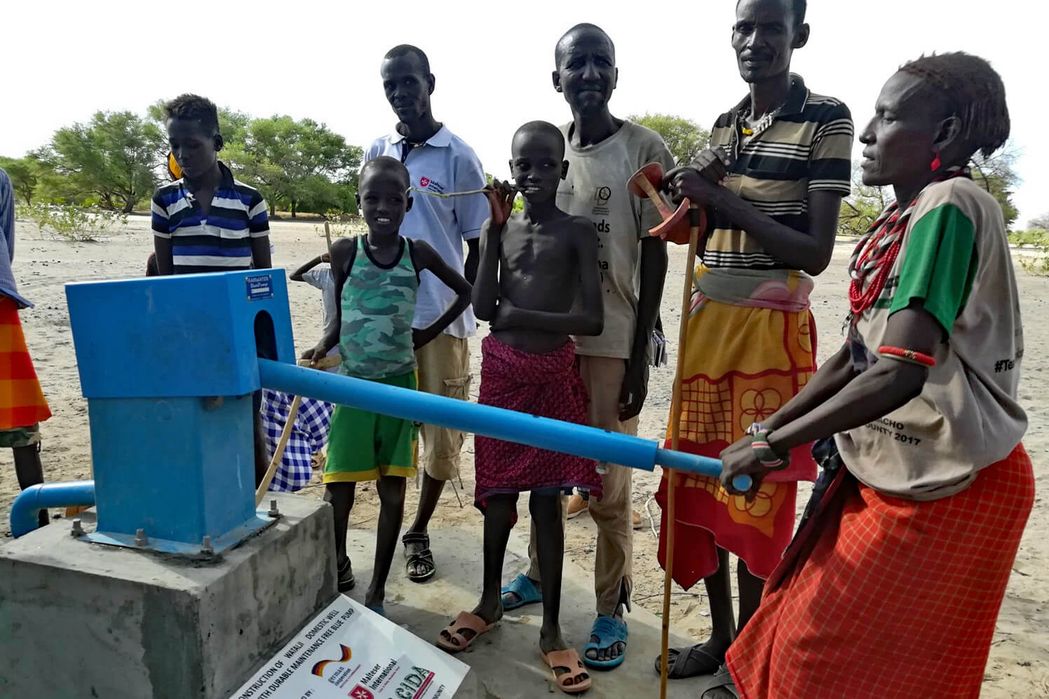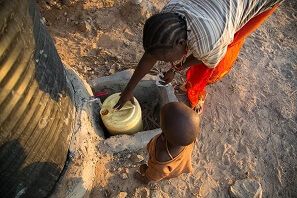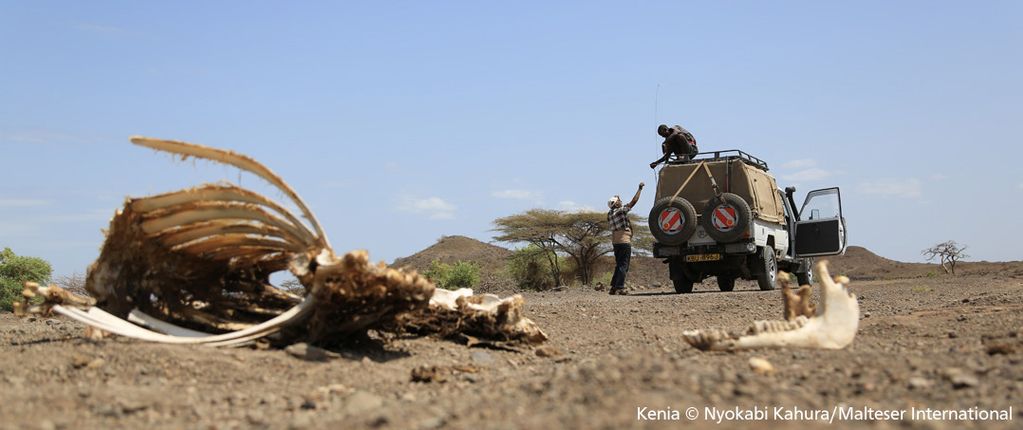
Emergency aid against droughts, water shortages and food scarcity
Long periods of drought are a serious threat not only in Africa, but also in parts of Australia, Europe and South America where many people lose their livelihoods due to long periods of drought: animals die, people go hungry and water shortage becomes a big problem.
In many regions more than half of all children under five years of age are malnourished or undernourished due to drought.
After drought disasters, people around the world are dependent on food aid and the supply of clean drinking water.
We support the population in drought-affected regions to counteract dangers such as famine and malnutrition.
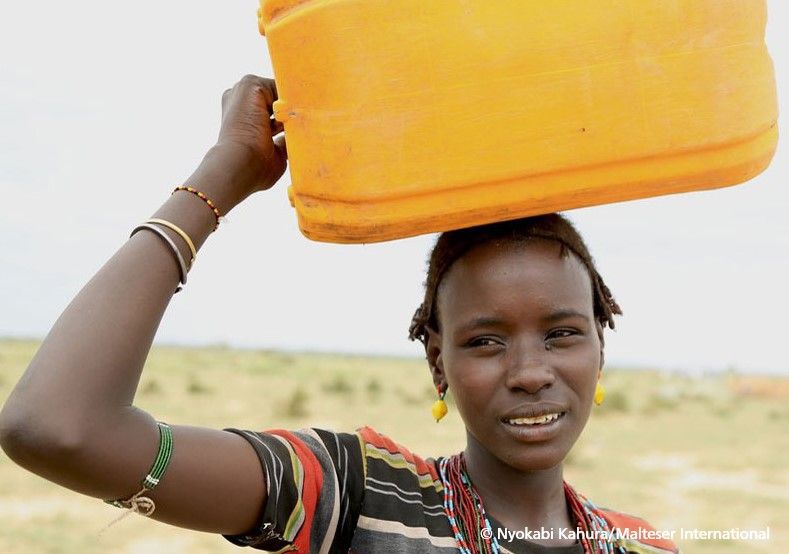
Serious threat due to prolonged drought
A drought means first and foremost water shortage and, in the long term, food shortage. Especially in poor countries in Africa prolonged droughts quickly become natural disasters: Crop failures threaten the lives of many people and lead to famine.
The dry periods are particularly problematic because they are unpredictable and have no discernible rhythm. As a creeping phenomenon, a drought becomes increasingly noticeable over a relatively long period of time. However, the full extent of the drought is only visible when it has already had a significant impact on the population. If the drought even lasts for several years, we are talking about a drought disaster.
The severity of a drought can be determined on the basis of soil moisture using the Palmer Drought Severity Index (PDSI). This is the most widely used index of drought, indicating the severity of the drought on a scale of 4 to -4. The positive numbers stand for moisture and wetness of the soil, droughts are indicated in negative numbers.
Palmer Drought Severity Index (PDSI)
| 4 and more: Extremely wet |
| 3 to 3,99: Very wet |
| 2 to 2,99: Moderately wet |
| 1 to 1,99: Slightly moist |
| 0,5 to 0,99: Beginning wet period |
| 0,49 to -0,49: Normal condition |
| -0,5 to -0,99: Beginning dry period |
| -1 to -1,99: Slight drought |
| -2 to -2,99: Moderate drought |
| -3 to -3,99: Severe drought |
| -4 and lower: Extreme drought |
Reports from the drought zone in Kenya
The consequences of a drought
Serious water shortages always have a negative impact on the population, agriculture, ecology and economy of a country. In drought zones, most water sources dry up and it rains so rarely that there is not enough water for people and animals. A large part of the livestock dies as a result of the drought or stops producing milk. Since many people depend on livestock and its exchange for other food, sustenance is increasingly lacking.
Due to food shortages and rising food prices, malnutrition as well as water shortages increasingly become problems in the population. Children are particularly affected by this: Malnutrition has a serious impact on long-term health as it affects the physical development of children. A drought disaster thus has negative consequences for the development of the country long after it has ended.
Desertification: definition, causes and consequences
The term desertification describes a process in which fertile land is degraded and becomes unusable – not through the natural formation of deserts, but as a result of human activity. It is a man-made phenomenon that can affect areas where deserts would not naturally occur.
The main cause of desertification is the over-intensive and unsustainable use of land for agriculture, particularly in arid regions that are not suited for such heavy exploitation. Additional contributing factors include overgrazing by livestock, the clearing of forests, and the cultivation of monocultures. These practices have long-term damaging effects on soil quality and drive the spread of desertification.
As natural resources are overused and water becomes scarce, vegetation in affected areas gradually declines or disappears. This leads to soil erosion and the degradation of the land – a process often referred to as land degradation. As a result, the regenerative capacity of the entire ecosystem is diminished, making desertification typically irreversible.
Although drought and desertification are distinct phenomena, they are closely linked. When combined with intensive land use, increasing dryness promotes the development and spread of desertification. One third of the Earth's land surface is made up of drylands, and 70 percent of these areas are already at risk of desertification.
How we support people during drought disasters
We support particularly endangered countries in order to secure the livelihoods of the people. In the long term, we want to improve the quality and quantity of drinking water as well as the hygiene and sanitation conditions (WASH). Access to new sources of water is earmarked not only for human use but also for irrigation and livestock to maintain agriculture and animal health.
By constructing latrines, shallow wells and rainwater collection systems in households and schools, we contribute to a constant water supply. We also train the population in water and hygiene to reduce the transmission of diseases. In addition, we regularly use samples to check the water for impurities.
In addition, we support indigent families with food and food vouchers in order to counteract famine. Health stations are also supplied with supplementary food for malnourished children under five years of age.
To enable drought-prone regions to better prepare for recurring droughts, we raise awareness among the population of climate risks and possible conflicts that can arise from resource scarcity. In addition, we train the people to be better able to deal with the scarce resources.
Major droughts in recent years
There have been long periods of drought in recent years particularly in African countries. In February 2017 the drought in Kenya was declared a national disaster. Countries such as Somalia, Nigeria and Yemen were also affected by drought.
Many people lacked basic sustenance at that time and in northern Kenya alone 2.7 million people were dependent on food aid. In the drought zones, 1.4 million children were at risk of starvation due to food shortages. We provided active emergency aid and supported the local population with food to alleviate the greatest need.
With your donation you can help us to prepare people for future droughts.


